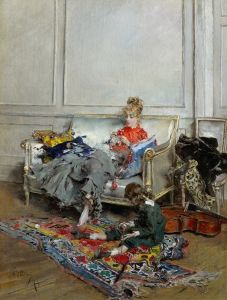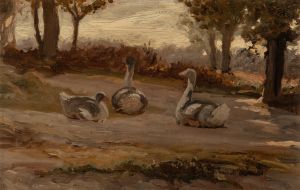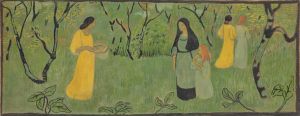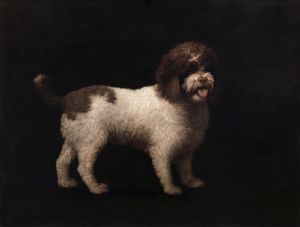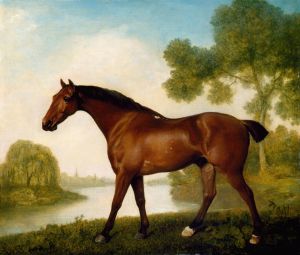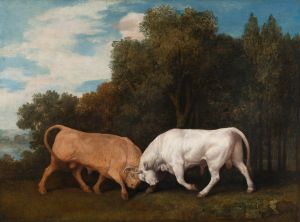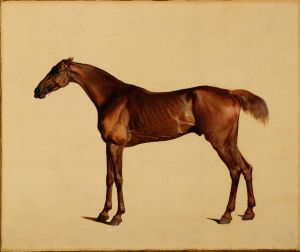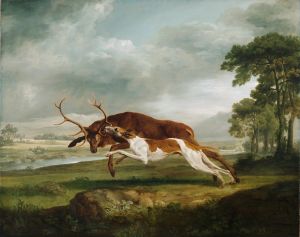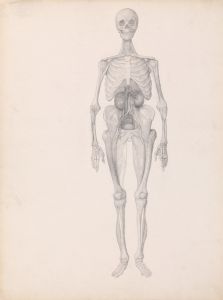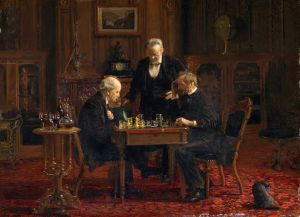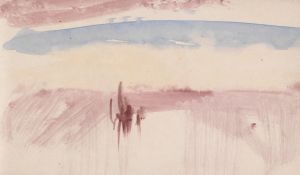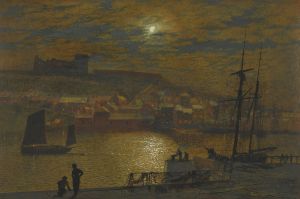
The Countess of Coningsby in the Costume of the Charlton Hunt
A hand-painted replica of George Stubbs’s masterpiece The Countess of Coningsby in the Costume of the Charlton Hunt, meticulously crafted by professional artists to capture the true essence of the original. Each piece is created with museum-quality canvas and rare mineral pigments, carefully painted by experienced artists with delicate brushstrokes and rich, layered colors to perfectly recreate the texture of the original artwork. Unlike machine-printed reproductions, this hand-painted version brings the painting to life, infused with the artist’s emotions and skill in every stroke. Whether for personal collection or home decoration, it instantly elevates the artistic atmosphere of any space.
"The Countess of Coningsby in the Costume of the Charlton Hunt" is an oil painting by the renowned British artist George Stubbs, completed in 1760. Stubbs is celebrated for his precise and anatomically accurate depictions of animals, particularly horses, and this work is a testament to his skill in capturing both human and equine subjects.
The painting features the Countess of Coningsby, presumably Frances Coningsby, who was known for her involvement in the social and sporting circles of her time. She is depicted in the attire associated with the Charlton Hunt, one of the most prestigious fox hunting clubs in England during the 18th century. The Charlton Hunt was based in Sussex and attracted many members of the British aristocracy, who were keen participants in the sport of fox hunting, which was a popular pastime among the elite.
In this portrait, the Countess is shown in a riding habit, which was the typical attire for women participating in hunts during this period. The costume is both practical and stylish, reflecting the fashion of the time and the Countess's status. Her attire includes a riding jacket, a waistcoat, and a tricorn hat, which were customary for women of her standing when engaging in outdoor pursuits.
Stubbs's painting is notable for its attention to detail and the realistic portrayal of both the Countess and the horse. The artist's expertise in equine anatomy is evident in the lifelike depiction of the horse, which is a central element of the composition. The horse is shown in profile, highlighting its muscular form and the elegance of its stance, which complements the poised demeanor of the Countess.
The background of the painting is relatively simple, drawing the viewer's focus to the Countess and her horse. This compositional choice is typical of Stubbs's work, where the subject is often isolated against a plain or minimally detailed backdrop to emphasize the form and character of the figures.
"The Countess of Coningsby in the Costume of the Charlton Hunt" is an excellent example of Stubbs's ability to blend portraiture with sporting art, a genre that he helped to elevate during his career. The painting not only captures the likeness of the Countess but also serves as a historical document, providing insight into the fashion, social customs, and leisure activities of the British aristocracy in the 18th century.
Today, George Stubbs is regarded as one of the foremost painters of his era, particularly in the realm of animal and sporting art. His works are celebrated for their technical precision and the way they capture the spirit of the subjects, whether human or animal. "The Countess of Coningsby in the Costume of the Charlton Hunt" remains a significant piece within Stubbs's oeuvre, reflecting both his artistic prowess and the cultural milieu of his time.





